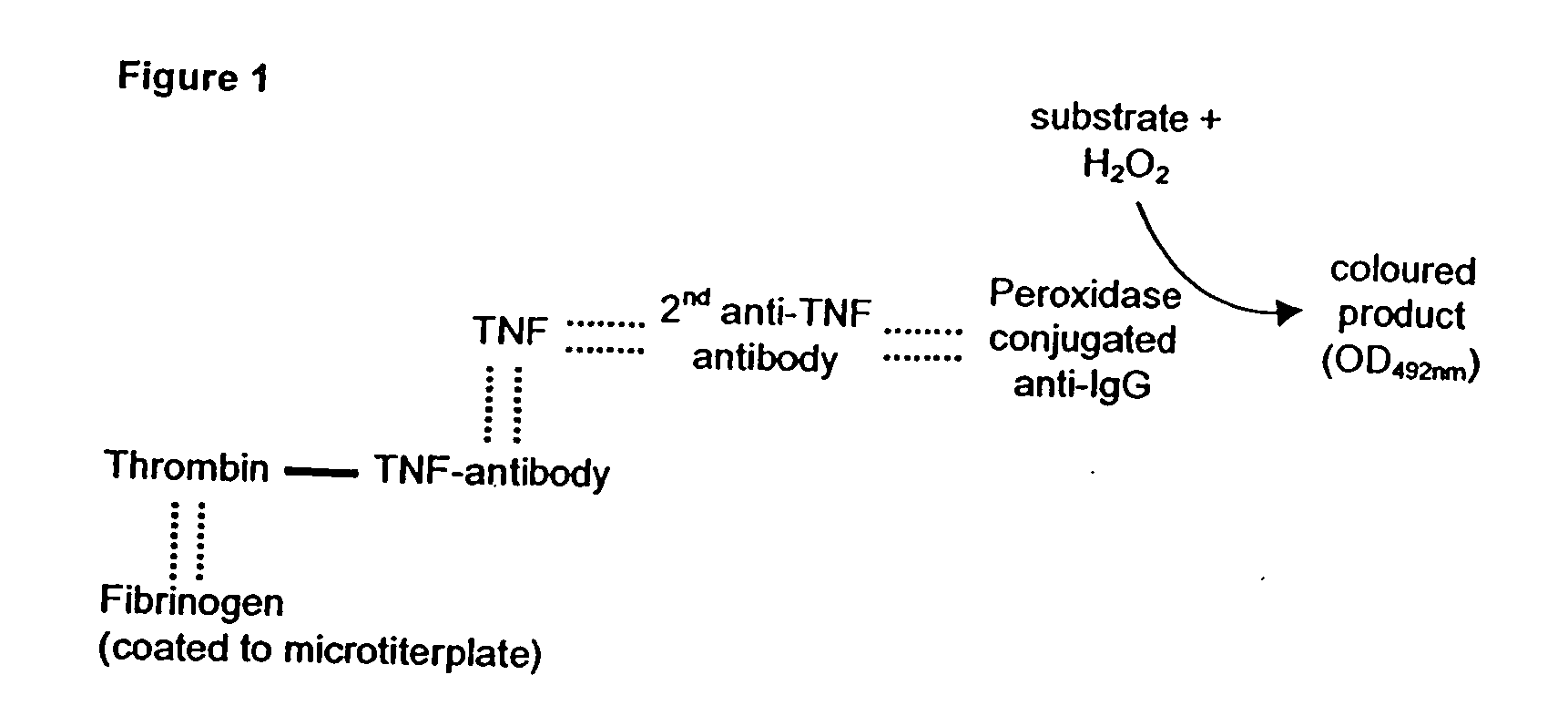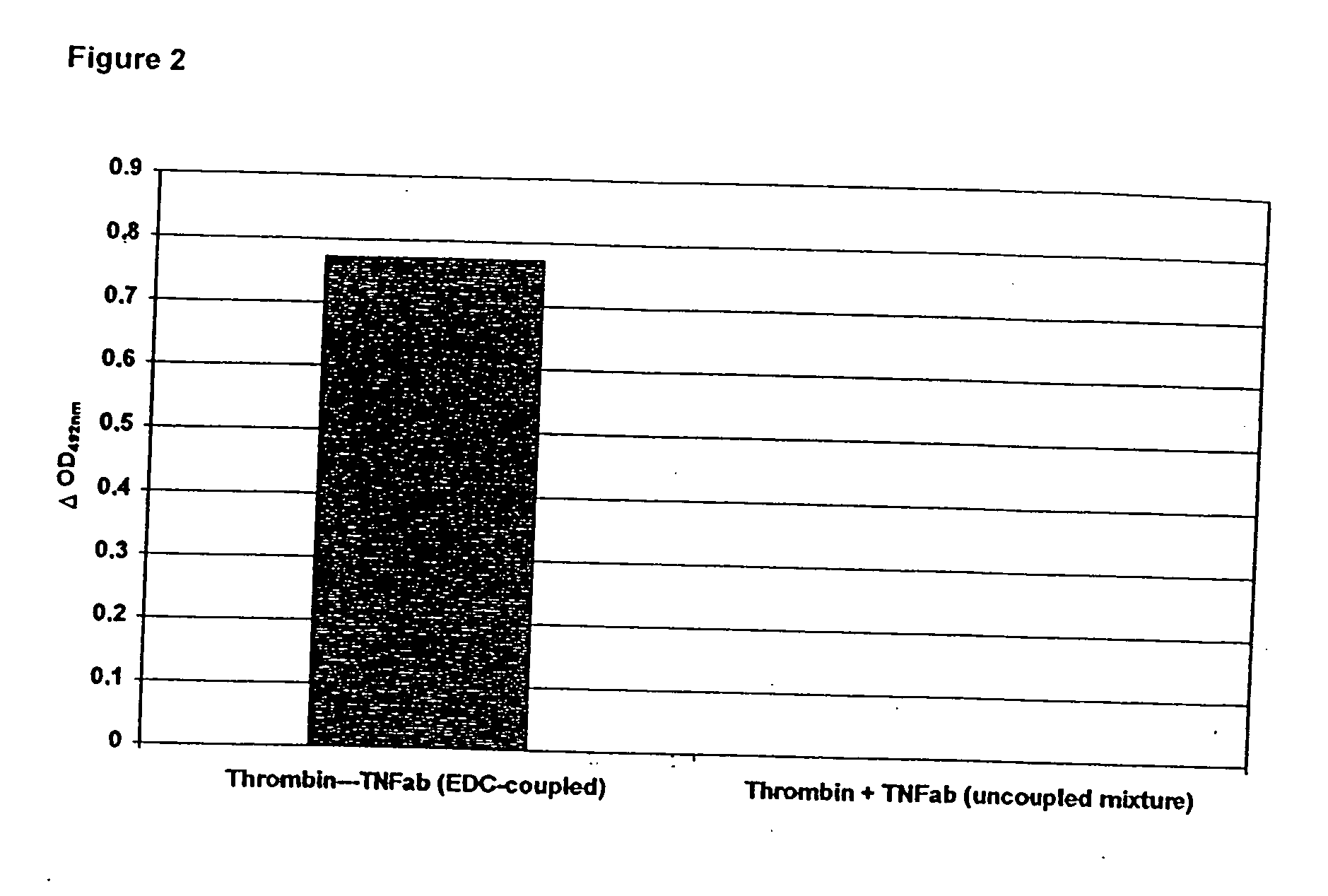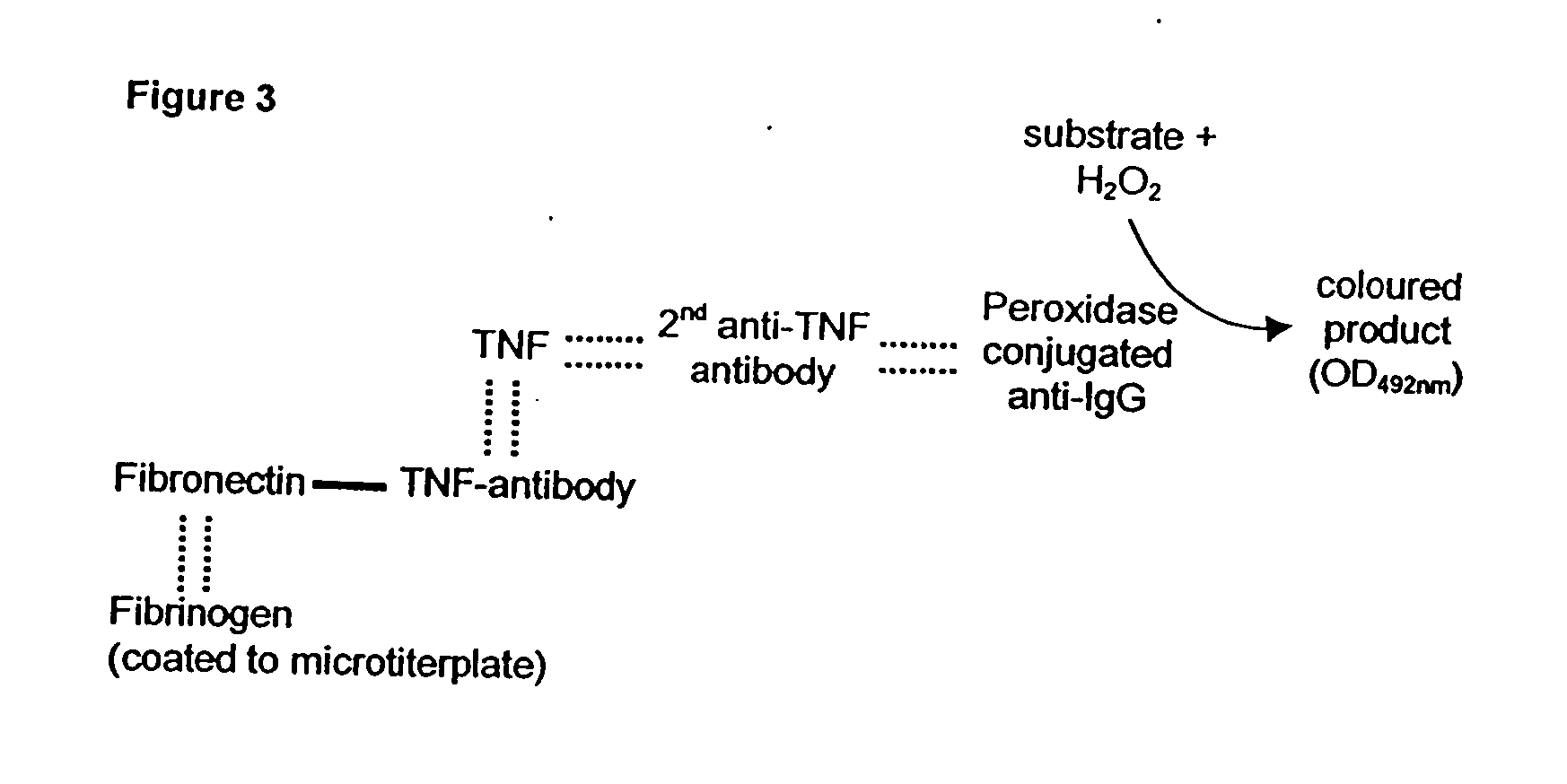Fibrin/fibrinogen-binding conjugate
a technology of conjugate and fibrin, which is applied in the direction of peptide/protein ingredients, depsipeptides, and macromolecular non-active ingredients, etc., and can solve the problem of inability to elution of pharmaceutically active substances
- Summary
- Abstract
- Description
- Claims
- Application Information
AI Technical Summary
Benefits of technology
Problems solved by technology
Method used
Image
Examples
example 1
[0061] Coupling of TNF Antibody to Thrombin
[0062] A commercially available TNF antibody was coupled to thrombin via EDC. The proof for coupling and the individual binding affinities in the conjugates was detected via sandwich-ELISA (FIG. 1). Briefly, a microtiter plate was coated with fibrinogen and subsequently incubated with a complex (thrombin-TNF antibody or TNF antibody-thrombin), with TNF, with a secondary TNF antibody and with an enzyme conjugate recognizing the secondary antibody. This enzyme transforms a colorless substrate to a colored compound which is subsequently detectable. The turnover of the substrate is only possible if both components (TNF antibody and thrombin) have been covalently coupled by the EDC reaction and both binding affinities have been preserved. Thrombin-TNF antibody as well as TNF antibody-thrombin give positive reaction in this system (FIG. 2). Unmodified TNF antibody used as a control could not bind TNF to the fibrinogen matrix.
example 2
[0063] Coupling of TNF Antibody to Fibronectin
[0064] A commercially available TNF antibody was coupled to fibronectin using EDC. The proof for coupling and the detection of the individual binding affinities in the conjugates was performed via sandwich-ELISA (FIG. 3), as in example 1. Fibronectin-TNF antibody as well as TNF antibody-fibronectin showed positive reaction in the present system (FIG. 4). A mixture of TNF antibody and fibronectin as control showed only a low binding of TNF to the fibrinogen matrix.
example 3
[0065] Retarded Liberation of TNF from a Tissue Adhesive Clot
[0066] The proof for efficient retardation of TNF in a tissue adhesive clot based on fibrinogen was performed by adding TNF and fibronectin-TNF antibody complex as described in example 2 to the fibrinogen component of a fibrin sealant. In control experiments TNF and a mixture of fibronectin and TNF antibody have been added to this fibrinogen component. The fibrin clots were produced with such modified fibrinogen components and transferred to PBS 60 min after clotting. The clots then were incubated at 37.degree. C. and PBS supernatants were substituted with fresh PBS at defined time periods. TNF content in these supernatants were detected (FIG. 5). After 12 days the clots were lysed with urokinase and the TNF content in the lysate was detected.
[0067] Addition of the fibronectin-TNF antibody complex to the fibrinogen component of the tissue adhesive resulted in a significant retardation of the liberation of TNF compared to t...
PUM
| Property | Measurement | Unit |
|---|---|---|
| adhesive | aaaaa | aaaaa |
| affinity | aaaaa | aaaaa |
| biocompatible properties | aaaaa | aaaaa |
Abstract
Description
Claims
Application Information
 Login to View More
Login to View More - R&D
- Intellectual Property
- Life Sciences
- Materials
- Tech Scout
- Unparalleled Data Quality
- Higher Quality Content
- 60% Fewer Hallucinations
Browse by: Latest US Patents, China's latest patents, Technical Efficacy Thesaurus, Application Domain, Technology Topic, Popular Technical Reports.
© 2025 PatSnap. All rights reserved.Legal|Privacy policy|Modern Slavery Act Transparency Statement|Sitemap|About US| Contact US: help@patsnap.com



